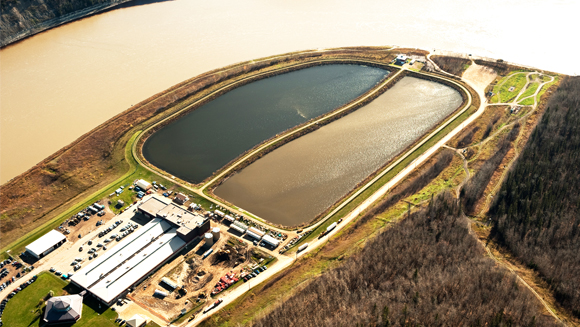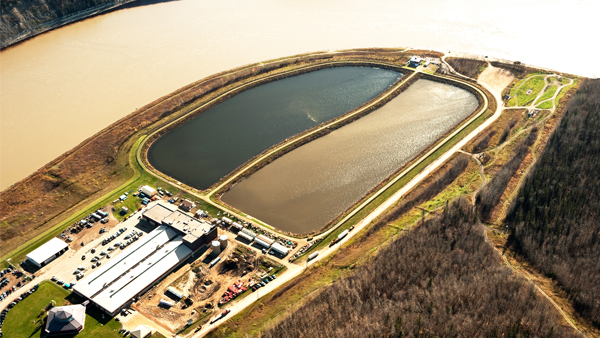
Accommodating growth
Over the past 10 years, Alberta has experienced tremendous growth. In 2011, Alberta’s population grew by 1.6 percent while the province’s economy expanded by 3.3 percent, with the employment increasing by more than 77 000. In the Regional Municipality of Wood Buffalo, northeast of Edmonton, the average annual growth rate was 7.4 percent between 2000 and 2010. As expected, the booming growth rate ultimately put a strain on local resources and services, especially water.
Designed in the 1980s, the existing water treatment plant located in Fort McMurray was built to service approximately 50 000 people with 32 million litres of water per day (MLD). By 2003, however, it was recognized that the plant would require an upgrade address more stringent regulatory requirements, a growing service area, and of course, rapid population growth.
“We started off by optimizing the plant as much as we can using the existing plant and putting in the mechanical components to optimize the treatment of water,” explains Wes Holodniuk, Director of Engineering and Transportation with the Regional Municipality of Wood Buffalo.
As a result, the Regional Municipality of Wood Buffalo decided to expand the plant output to 50 MLD for a population of approximately 70 000.
“However, when we looked at the long-range projection of growth, we saw we would require a major upgrade to the water treatment plant to take us to the 133 000 population threshold,” says Holodniuk.
Facility upgrades
The facility improvements, which will be completed by 2013, include (among many others): a filtration capacity upgrade, filtration piping modifications, plant waste discharge system upgrade, and plant site roadway access modifications.
As with any construction project, the Athabasca Water Treatment Plant Upgrades provides employment to local residents in the surrounding communities.
The project itself is a result of collaborations of various departments within the regional municipality: Engineering, Environmental Services, Accommodations, Planning, Information Technology, and Parks. The project also benefits from consulting expertise of Associated Engineering and contractor, Bird Construction Company.
Technological advances and sustainable practices
With new regulatory requirements to meet, the project utilizes a number of technological advances. The building itself was designed using LEED principles and UV disinfection was installed. Further upgrading the 1980s system, a New Control System will be installed and a Plant Waste Management System will help reduce the amount of water waste. These features not only create a more efficient and functional water treatment facility, but they also ensure the plant is well prepared to meet the needs and demands of the future.
The Athabasca Water Treatment Plant Upgrades project is also a green initiative, utilizing environmentally-friendly and sustainable practices in the construction and in the plant itself.
“We are definitely looking at our energy consumption, where our booster pumps are, and how far we push the water,” explains Holodniuk.
The building’s LEED principles will be constructed using high efficiency windows to decrease the need for air conditioning and heating and the roof of the administration’s new building will feature a solar and green roof.
Constrained by the Athabasca River on two sides, the escarpment on one side, and bridge construction to the north, the project hasn’t been without its share of challenges.
Holodniuk says operating the plant everyday while treating water and doing construction at the same time has also been particularly challenging.
“We’ve had to move our lab and our whole control panel, relocate staff and operations. Site security, safety, and making sure everything operates are our biggest concerns,” he says.
Since construction and day-to-day operations are occurring on site simultaneously, Holodniuk also says safety is a top priority for the project.
“We want to make sure everyone knows what safety parameters are in place for evacuation or emergency because we’re doing two different operations on the same site,” he explains.
Building for the future
Although the project has not received any official awards to date, they are certainly on the right path to recognition for their innovation, resourcefulness, and problem solving.
Holodniuk is particularly proud of the fact that although the project is slightly under budget, they are on schedule and things are running smoothly.
“And I guess I am going to knock on wood. We’ve been able to operate and construct at the same time and things are running relatively smoothly,” he says.
The Regional Municipality has a number of other plans to help service the region’s growing and dispersing population. The Comprehensive Regional Infrastructure Sustainability Plan (CRISP), which was planned by the Government of Alberta, will be implemented in the region. The CRISP will establish a long-term blueprint for future infrastructure development that will match economic development in the area.
With a current population of 104 338, the Regional Municipality of Wood Buffalo will continue to grow substantially in the coming years and with the Athabasca Water Treatment Plant Upgrades project underway, future residents can be sure they will continue to have access to safe, high quality drinking water.






